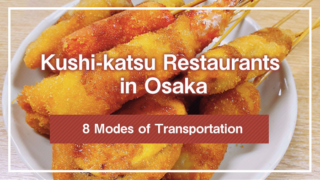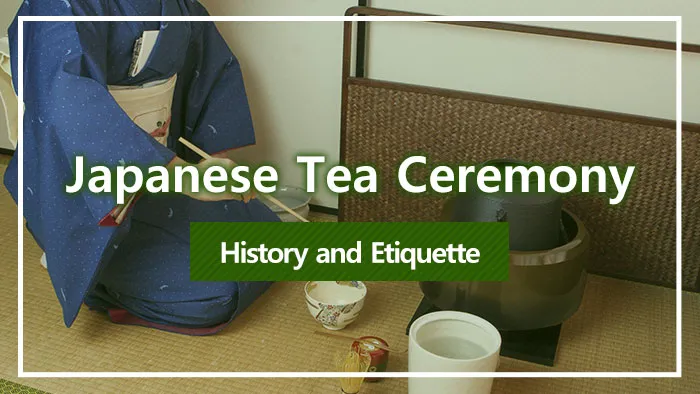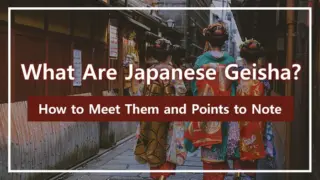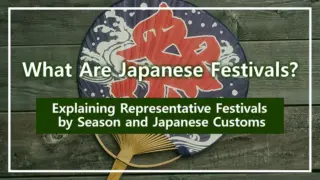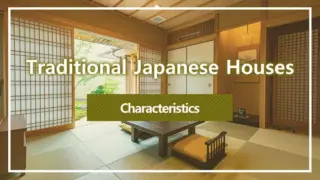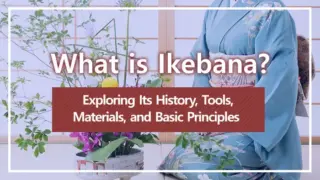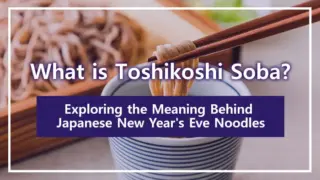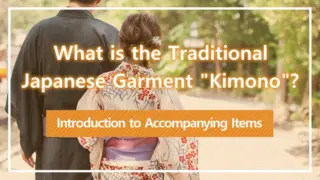The tea ceremony (sadō), a representative traditional culture of Japan, is a profound art form through which one learns courtesy and the spirit of hospitality by preparing and serving a bowl of tea. Far from being merely a place for eating and drinking, it is said to be a complete spatial art form where the garden, tea room, utensils, and etiquette all harmonize together. The tea ceremony has a long history behind it, and its unique terminology and movements embody the aesthetic sensibilities and values of the Japanese people.
This article introduces the appeal of the tea ceremony by explaining its history, basic terminology, and etiquette in a way that is easy to understand, even for beginners.
1. Japanese Tea Ceremony
The tea ceremony is a culture in which, following traditional Japanese customs, the host prepares matcha (powdered green tea) and serves it to guests, who quietly savor it while receiving this hospitality. Far from being merely a place for eating and drinking, it can be described as a comprehensive art form that integrates the temae (the act of preparing tea), etiquette, the arrangement of the garden and tea room, the selection of tea utensils, and even Japanese sweets and kaiseki cuisine. Zen philosophy is deeply rooted in the tea ceremony, and the series of actions involved in preparing matcha provides an opportunity to calm one’s mind and reflect on oneself.
Originally, tea culture spread among aristocrats and monks, then was passed down to samurai and merchants, and over time expanded to include common people and women. Today, it can be learned at many tea ceremony schools, centered around the three major schools: Urasenke, Omotesenke, and Mushakojisenke.The tea ceremony is a Japanese culture that embodies the “spirit of hospitality,” and continues to be passed down to the present day as an important place of exchange that connects people.
2. History of the Japanese Tea Ceremony
Tea was introduced from China, and during the Heian period, it is said that Saichō and Kūkai brought it back from Tang China. The tea of that time was “dancha,” compressed into dumpling-like cakes, and was treasured among aristocrats and monks. In the Kamakura period, Eisai, a monk of the Rinzai sect, brought tea seeds back from Song China and promoted the benefits of tea in his book Kissa Yōjōki (Drinking Tea for Health), which made tea widely known. His disciple Myōe spread tea cultivation in Uji, establishing the foundation for present-day Uji tea. Eventually, the custom of drinking tea spread to samurai and common people as well, and tea gatherings and a game called “tōcha” (tea-tasting competitions) became popular.
During the Muromachi period, lavish tea gatherings using high-quality Chinese tea utensils called “karamono” were actively held among shoguns and feudal lords. However, Murata Jukō proposed “wabi-cha” in response, which valued Japanese uniqueness, simplicity, and spirituality. This philosophy was inherited by Takeno Jōō and brought to perfection by his disciple Sen no Rikyū during the Azuchi-Momoyama period. Rikyū completed the tea ceremony by using simple tea rooms and everyday utensils, emphasizing not just formality but spiritual connection.
In the Edo period, the term “tea ceremony” became established, and the culture developed to the point of being adopted as an official ritual of the shogunate. Subsequently, Sen no Rikyū’s descendants established Omotesenke, Urasenke, and Mushakojisenke, continuing to preserve the tradition of tea ceremony as diverse schools. Even today, the tea ceremony continues to be passed down as a culture embodying the “spirit of hospitality” and attracts high interest both domestically and internationally.
3. Japanese Tea Ceremony Terminology
The tea ceremony consists of the arrangement of the tea room, the garden scenery, the sweets served to guests, and the tea itself that is prepared. To understand the flow of a tea gathering, it is important to grasp basic terminology related to attire, the garden, the tea room, and utensils.
3-1. Attire
In the tea ceremony, flashy clothing and strong perfume are avoided as they detract from the tea and its aroma, and modest attire with a sense of cleanliness is encouraged. For women, if wearing kimono, iromuji (solid-colored kimono) or komon (small-patterned kimono) are standard, and polyester material is also suitable for practice. If wearing Western clothing, a long-sleeved blouse with a below-knee-length skirt is safe, and it’s reassuring to prepare white socks. Men often participate in formal kimono with crests or suits, and it is proper etiquette to always change into clean tabi (split-toe socks) or socks.
Accessories and flashy nail art should be removed as they can damage tea utensils and hinder movements, and the use of perfume should also be refrained from. It is important to cherish the atmosphere of the tea gathering with modest attire.
3-2. Garden
Traditional tea rooms are surrounded by gardens and designed to emphasize tranquility and simplicity. Flowers with bright colors or strong fragrances are avoided, and natural stones arranged along small paths, stone water basins for purifying hands, and stone lanterns add charm. Such tea gardens are called “roji” and were developed by Sen no Rikyū as a place embodying “wabi-sabi.” The roji features waiting benches and tsukubai (stone water basins for crouching), where guests prepare their minds and bodies before entering the tea room.
On the other hand, many modern tea rooms do not have gardens, and in urban areas, simple approaches are devised within limited spaces. The garden is not merely scenery but is considered an important element for purifying one’s mind before attending a tea gathering.
3-3. Tea Room (Japanese-Style Room)
The tea ceremony is conducted in a tatami tea room, and the entrance for guests is built low so that bowing to enter demonstrates humility. The tea room has a tokonoma (alcove), where hanging scrolls and seasonal flowers are displayed, and guests sit in seiza (formal kneeling position), bow once, and appreciate them to compose their minds. The principal guest sits in the seat closest to the tokonoma, and positions are determined in order according to age and status, which is also a characteristic feature.
There are also detailed protocols for the placement of incense containers and flowers, with the basic arrangement being flowers on the left of the tokonoma and the incense container on the right. A typical tea room is equipped with a hearth, folding screens, and a dedicated entrance for the host, with the entire space embodying serene and simple beauty.
3-4. Utensils
The tea ceremony has dedicated utensils that have been passed down through generations for tea gatherings.Each has a specific role, and proper etiquette is established for their use and handling. Representative items include the following:
- Chawan (tea bowl): A vessel for preparing and drinking matcha
- Natsume: A container for holding matcha
- Chashaku (tea scoop): A bamboo spoon for scooping matcha
- Chasen (tea whisk): A bamboo whisk for preparing matcha
- Hishaku (ladle): A bamboo ladle for drawing water or hot water
- Kama (kettle): An iron pot for boiling water
- Fukusa (silk cloth): A cloth for purifying tea utensils
- Kaishi (folded paper): Paper used when receiving sweets
These tea utensils are not merely practical items but are considered important elements expressing formality and aesthetic sensibility.
4. Etiquette in the Japanese Tea Ceremony
In the tea ceremony, etiquette is valued above all else in an atmosphere that honors tranquility and harmony. Guests follow detailed rules even when receiving sweets and tea, showing respect to the host and other guests. Here, we introduce how to drink tea and how to eat sweets.
4-1. How to Eat Sweets
At a tea gathering, the proper etiquette is to eat sweets before drinking tea. When the host invites you with “Please have some sweets,” bow and say “I humbly partake,” then tell the guest next to you “Excuse me for going first” before taking the sweet. Do not bring it directly from the sweet container to your mouth; first place it on kaishi paper, hold the kaishi in your left hand, and partake with your right hand.
For fresh sweets, use a sweet pick or toothpick to cut them into bite-sized pieces and eat quietly. After finishing, fold the kaishi paper and take it home to dispose of, which is proper etiquette. The basic rule is to finish eating the sweets before drinking the matcha, as they are designed so that the sweetness harmonizes with the bitterness of the matcha. This series of movements embodies respect for the host and consideration for other guests, reflecting the spirit of the tea ceremony that cherishes harmony in the gathering.
4-2. How to Drink Tea
In the tea ceremony, the fundamental principle is to receive the tea prepared wholeheartedly by the host with respect and gratitude. First, say “Excuse me for going first” to the guest next to you, then bow to the host saying “I humbly receive your temae.” Take the tea bowl with your right hand, place it on the palm of your left hand, add your right hand, and lift it slightly to show gratitude.To avoid the front design, rotate the tea bowl clockwise twice before bringing it to your lips. Rather than drinking the tea all at once, three and a half sips is considered ideal, savoring it quietly as you drink. Making a sound with the final sip to finish the tea completely expresses appreciation for the host’s efforts.
After finishing, wipe the rim with your right thumb and index finger, then purify it with kaishi paper. Then, rotate the tea bowl counterclockwise to return it to its original position, and place it with the front facing the host. Each of these movements constitutes proper etiquette and demonstrates respect for the tea bowl and the temae.
Conclusion
The tea ceremony is a comprehensive art form that integrates the act of preparing matcha, etiquette, the arrangement of the tea room and garden, tea utensils, and Japanese sweets, and is a culture for composing one’s mind with Zen philosophy as its background. The tea drinking custom introduced from China developed into a tea ceremony emphasizing spirituality through Sen no Rikyū’s “wabi-cha.” Today, it continues to be passed down centered around Omotesenke, Urasenke, and Mushakojisenke.
At tea gatherings, consideration is given to attire and garden arrangements, and in the tea room, formal sitting and bowing are emphasized. Utensils such as tea bowls, natsume, and chasen are also handled with care. In terms of etiquette, sweets are received on kaishi paper, matcha is savored in three and a half sips with gratitude, and respect for the host and other guests is shown through one’s movements.
*This article is based on information available as of October 2025.



